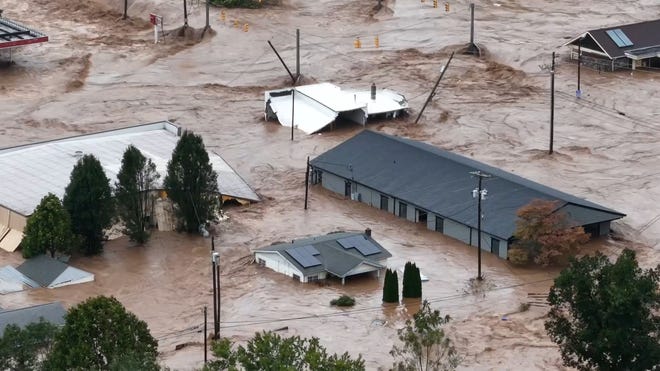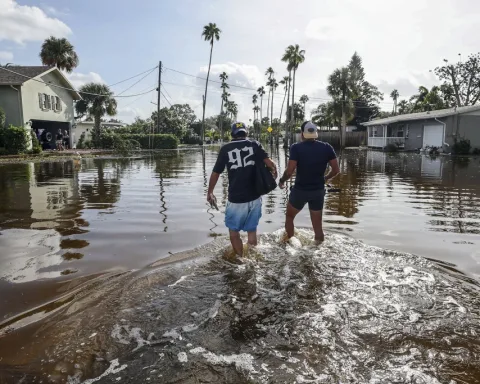Death toll from Hurricane Helene, which battered the southern and eastern coasts of the United States, has risen to at least 162.
Officials have warned that the number could rise further, as widespread destruction to communication networks and road infrastructure is making it difficult for rescue teams to reach trapped individuals.
Join our WhatsApp ChannelWhile addressing the nation on Monday, President Joe Biden, revealed that over 600 people remain unaccounted for due to the storm’s devastation. “The destruction is unimaginable, and the loss of life is heartbreaking. We are doing everything we can to reach those still in need,” Biden said, pledging federal support for affected states.
Hurricane Helene, initially monitored as it approached the US from the Gulf of Mexico as a Category 1 storm, rapidly intensified into a catastrophic Category 4 hurricane before making landfall in the state of Florida. The hurricane has since wreaked havoc across several states, with Florida, Georgia, South Carolina, North Carolina, Tennessee, and Virginia bearing the brunt of the storm’s force.
As of Tuesday evening, CBS News confirmed that the storm-related death toll had risen to at least 162, including 77 fatalities in North Carolina, 36 in South Carolina, 25 in Georgia, 14 in Florida, eight in Tennessee, and two in Virginia. Many others remain missing, heightening fears that the toll could rise further.
Impact Across States
Hurricane Helene first made landfall in Florida’s Big Bend region, where it unleashed destructive winds and torrential rainfall, tearing through homes and businesses. The storm caused widespread power outages, leaving millions without electricity and water. Florida Governor Ron DeSantis described the situation as “devastating,” and rescue teams are continuing efforts to reach isolated communities.
READ ALSO: Floods: Nigeria In A Perpetual State Of Emergency Unpreparedness
After pummelling Florida, the storm moved into Georgia, where Governor Brian Kemp remarked that parts of the state “look like a bomb went off.” Homes were flattened, and trees were uprooted, blocking access to entire communities. Emergency services are struggling to clear roads and restore essential services, and many areas remain cut off.
North and South Carolina have also been severely impacted, with torrential rain straining dams and overflowing rivers, causing widespread flooding. In rural North Carolina, the town of Busick recorded an unprecedented 31 inches of rain in just 48 hours. North Carolina
Governor Roy Cooper, at a Sunday press conference, described the event as “an unprecedented tragedy that requires an unprecedented response.”
Tennessee, though less directly affected, has faced significant flooding and damage, while parts of Virginia are struggling with the aftermath of wind damage and power outages.
Rescue Efforts
The Federal Emergency Management Agency (FEMA), local authorities, and other emergency responders are engaged in a massive search and rescue operation, though ongoing storms and the scale of devastation are making these efforts difficult. The U.S. Coast Guard and National Guard have been deployed to assist with rescues in remote and flooded areas, using helicopters and boats to reach those stranded.
FEMA Administrator, Deanne Criswell, confirmed that search and rescue personnel have been deployed to affected regions, and efforts are being made to restore satellite communications for emergency coordination.
Millions remain without power, and water shortages are widespread, with reports emerging of residents trekking for miles to access basic necessities. Authorities are working to restore critical infrastructure, but it could take weeks before power and water are fully restored in many areas.
President Biden described the damage caused by Hurricane Helene as “tragic” and announced plans to visit the hardest-hit states, including Georgia, North Carolina, and South Carolina. He reassured residents that federal aid would continue to flow to support recovery and rebuilding efforts.














